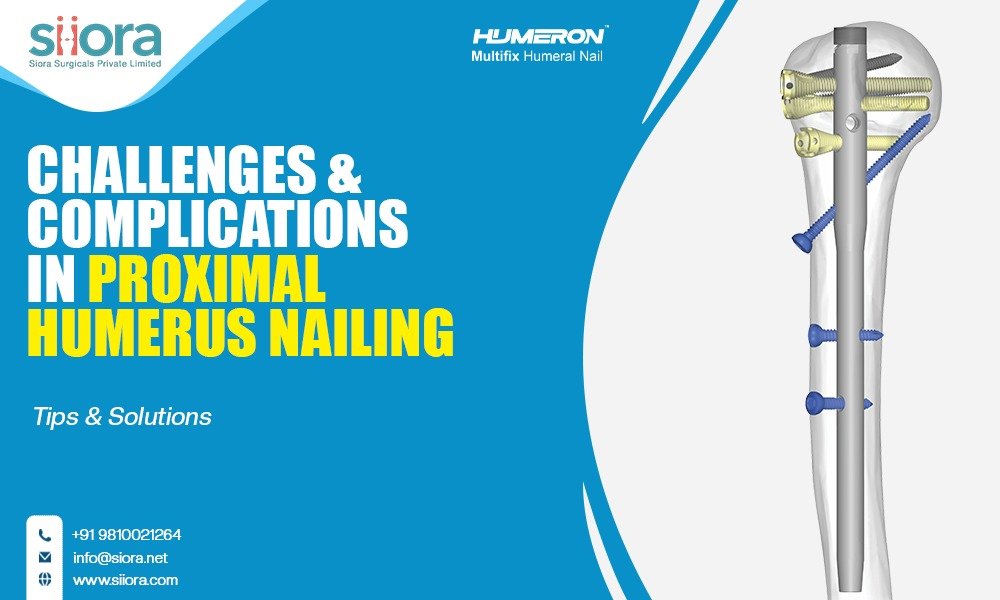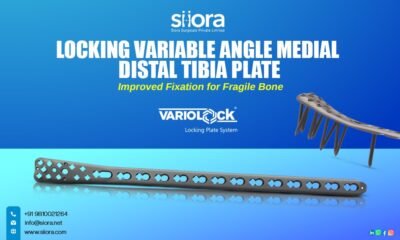Surgeons often call proximal humerus fractures the “troublemakers” of upper limb injuries. They seem simple on X-ray, but the reality in the operating theater is often quite different. Yes, intramedullary nailing has made life easier compared to older bulky implants—but anyone who has tried it knows it comes with its own frustrations. The truth is, this surgery can test not just a surgeon’s skills, but also their patience.
So, what’s so challenging about the proximal humerus nailing, and how can those problems be tackled? Let’s walk through it in real-world terms.
The Entry Point Debate
If you ask five surgeons about the perfect entry point, you may get five answers. Too medial, and you risk interfering with alignment. Too lateral, and you’re damaging the precious rotator cuff. Get it slightly wrong, and both fracture stability and shoulder function are compromised.
Solution? Use the fluoroscope obsessively, respect the cuff, and don’t rush this first step. A well-placed nail starts with a perfectly chosen entry. Think of it as measuring twice, cutting once.
Wrestling With Alignment
Fractures around the shoulder don’t sit neatly like puzzle pieces. They rotate, they tilt, and sometimes they behave unpredictably once you start inserting the nail. Poor alignment can mean a stiff, weak arm down the road.
One helpful trick is to use temporary K-wires or ‘joystick’ techniques to control fragments before final fixation. Some surgeons even combine wires or sutures with the nail for those really stubborn bones. The message is simple: don’t let the nail bully the fracture into alignment—guide it patiently.
The Rotator Cuff Problem
Any surgeon who has performed this procedure knows the sinking feeling of damaging the cuff. A careless move at the top, and the patient ends up trading a fracture for long-term shoulder pain.
Minimize incision size, enter cleanly, and respect the tendons. Nails designed with more lateral-friendly starting points can help. Post-op, gentle physiotherapy that avoids cuff overload in the early weeks can prevent bigger issues later.
Screws That Misbehave
Here’s a common phone call: “Doctor, something’s poking inside my shoulder.” Often, it’s a locking screw that’s backed out or was a tad too long. It irritates tissue and makes every movement annoying.
Fluoroscopy checks in at least two planes aren’t optional—they’re mandatory. Shorter screws or angled locking options can also reduce the chance of hardware causing grief later on. And if possible, explain to patients early that hardware irritation can happen—setting expectations helps.
The Dreaded Stiff Shoulder
Sometimes, even with the perfect surgery, a patient returns after a few months saying their arm just won’t move. Stiffness is the bane of shoulder surgery, often made worse by prolonged immobilization.
The fix? Early, structured movement. Not reckless exercises, but supervised passive motion that prevents adhesive capsulitis. A motivated physio team can make as much difference as the nail itself.
Nonunion and Malunion Woes
Of course, we can’t ignore the elephant in the room: bones that don’t heal right. If fixation is unstable or the fracture pattern was complex to begin with, nonunion or malunion is a real risk. Elderly patients with fragile bones are particularly vulnerable.
The smart move is to lock the nail securely with bicortical screws, consider bone grafting when bone stock is poor, and know when the nail isn’t the best tool. Sometimes, accepting that a trauma implant plate might serve better is part of good judgment.
Bringing It All Together
Proximal humerus nailing is an elegant solution on paper, but in real practice, it’s full of hurdles—from finding the sweet spot for entry to battling stiff shoulders later. Anticipating these problems is half the battle. The other half is managing them with careful technique, honest expectations, and a strong rehab plan.
Because at the end of the day, the goal isn’t just a healed X-ray—it’s a patient who can lift their arm without pain, dress themselves confidently, and return to the life they had before the fall.

 News2 months ago
News2 months ago
 Health2 years ago
Health2 years ago
 Technology2 years ago
Technology2 years ago
 Celebrity1 year ago
Celebrity1 year ago






















